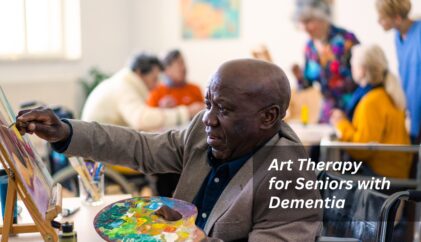
On this page
A type of depression is seasonal depression, often known as seasonal affective disorder (SAD). The change of seasons, usually in late fall or early winter, is what causes it.
As we move into the holiday season, many of us have been socially distancing for the better part of nine months. Unfortunately, with coronavirus cases soaring, there is no end in sight. For many, this has led to an increased sense of loneliness and emotional fatigue.
The continued “Covid-No” phenomenon (i.e. the ongoing list of things we cannot do, activities canceled, friends and family unseen, and celebrations unrealized), is exacerbating the negative impact on mood that already occurs for certain individuals during the winter months.
A more serious form of this “winter blues,” which occurs when both daylight and temperatures decrease is a condition known as Seasonal Affective Disorder (SAD).
Needless to say, the winter months and holiday season will be tougher this year and self-care will be essential. For individuals already prone to SAD, engaging in healthy coping will be even more important to combat the combined seasonal depression and added 2020 stressors.
What is Seasonal Affective Disorder (SAD)?
Many individuals have brief periods when they feel down and blue in the winter months. The “winter blues” is a general term, not a diagnosis, used for describing feeling more down during the winter months. These feelings are usually linked to something specific, like the stress of the holiday season or reminders of a loved one who has passed.
SAD, on the other hand, is a clinical diagnosis that impacts a person’s functioning for a longer period of time. In SAD, the depressive symptoms cause significant changes in a person’s mood and behaviors and occur when the seasons change.
In most cases, SAD symptoms start in later fall or early winter and go away in the spring and summer. Shorter days and less daylight seem to be a main trigger for SAD. Reduced sunlight in fall and winter can disrupt a person’s internal clock, or circadian rhythm. It can also impact serotonin production, a neurochemical important for mood management.
Symptoms of Seasonal Affective Disorder (SAD)
As a form of depression, many of the symptoms are similar to the criteria for major depressive disorder, although symptoms tend to include:
- Oversleeping (hypersomnia)
- Overeating (particularly craving for carbohydrates)
- Weight gain
- Low energy
- Being socially withdrawn and losing interest in activities one used to enjoy.
- A person may also experience feelings of hopelessness, worthlessness, and helplessness, as well as increased irritability.
How to Treat Seasonal Affective Disorder (SAD)
There are a number of healthy coping skills that can assist with reducing symptoms of SAD and improving mood management. These include:
- Sticking to your health habits. Exercise, eat healthy, get enough sleep, avoid excessive alcohol or drug use.
- Try to find opportunities for sun exposure during the day. Take a brief walk at lunch time, spend time near windows, etc.
- Try to stick to your routines and continue to engage in hobbies and pleasant events safely. This may have to be altered during the pandemic, but as best possible, find activities you enjoy and that are relaxing – take a warm bath, read a new book, try a new recipe, learn something new.
- Stay connected.This is harder during the pandemic as we follow social distancing guidelines. However, there is a difference between being alone and being lonely. You can feel connected to others without necessarily having physical contact with others. Consider ways to reach out to others. Send cards, make phone calls or video chat with friends.
Seek Professional Help if You Need it.
Despite your best efforts, you may find yourself feeling persistently depressed during the winter months. If these feelings last for a while, impact your functioning, or do not improve with your go-to coping skills, talk to your doctor or a mental health professional.
There are several evidenced based treatments for SAD that can be used alone or in combination:
Light Therapy
Light therapy has been consistently shown to be effective to reduce the symptoms of SAD. Light therapy exposes people to a bright light every day to make up for the diminished natural sunshine in the darker months. The goal is to offset the changes that occur in a person’s circadian rhythms due to shorter days and support continued production of serotonin – a neurochemical that assists with mood management and is produced when exposed to sunlight.
Antidepressants
Studies show that certain antidepressant drugs can be effective in many cases of SAD, especially if symptoms are severe. Speak with your medical doctor or a psychiatrist to discuss if an antidepressant would be appropriate for you. Keep in mind that it often takes many weeks before you will notice the effects of an antidepressant.
Psychotherapy
Psychotherapy (i.e. talk therapy) has also been shown to be effective in reducing SAD symptoms and may have a longer impact over light therapy. Cognitive behavioral therapy (CBT) is often the treatment modality of choice.
Both unhelpful thoughts and behaviors are targeted and replaced with healthier ones. Your therapist will help you learn strategies to reduce negative thinking, improve your sleep and health habits, and engage in behaviors and routines that assist in mood management.
Teletherapy
Talk therapy for SAD as well as the holiday blues can be conducted via telehealth. Research has shown similar efficacy for telehealth treatment as in-person treatment. Telehealth allows you to access your mental health professional from the comfort of your own home (or your location of preference), which may be increasingly important to individuals as the pandemic continues and Covid-19 numbers rise again.
Telehealth for SAD provides easy and consistent access to treatment, which may be needed now more than ever with the added stressors, sense of loneliness, and general fatigue many of us are experiencing as we near the end of 2020. You are not alone.



